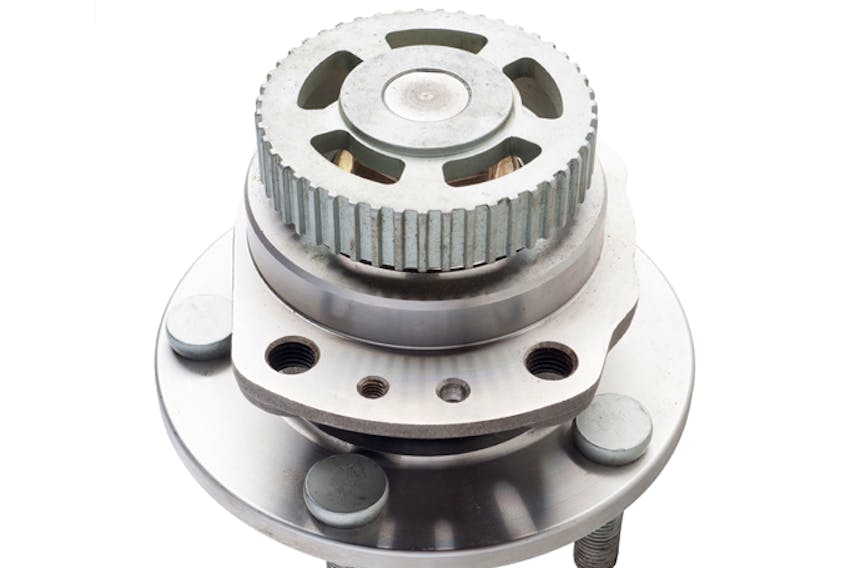Q: I own an old 2002 Oldsmobile Alero in good shape except my mechanic has diagnosed a rear wheel noise as “dry bearings.” I am told that the repair will require replacing the entire wheel hub. Not only is this expensive, $300 for parts alone per hub, but I am also told that both hubs should be replaced even though only one is making any noise. Is this advice correct? If so, could the second replacement be delayed and is there a downside to such a delay?
A: It is unusual for one of these wheel bearings to go “dry.” Usually the bearing starts to make noise because it has been damaged in an impact, such as bouncing over a curb, sliding sideways into a solid object on a slippery road, or bounced through a very bad pothole.
Your wheel bearing may have been damaged slightly in the past and has now worn to the point it is starting to make noise.
Your mechanic is correct in that the only repair for the bearing is to replace the hub. It is a sealed unit and cannot be disassembled without destroying it.
I would only replace the hub that is causing the noise. The other one, if quiet, should be fine and may give you thousands (or tens of thousands) of kilometres of service without any problems.
Replacing the hub involves removing the wheel and brake drum, disconnecting the wiring for the ABS speed sensor at the back of the hub, and unbolting the hub. There are four bolts holding the hub in place. A #50 Torx bit and some luck is required to remove them.
These bolts seem to be seized on almost every car on which I have had to remove them. It is not unusual to break the Torx bit while attempting to remove the bolts. Most wheel alignment technicians have 2 or 3 #50 Torx bits in their toolbox just for this reason!
An impact driver may help loosen them, or it may be necessary to heat them with a torch. Usually this will work but it has to be done using as little heat as necessary or other parts may be damaged.
After the hub is removed, you may find a tapered plastic shim behind it. This is an after-market wheel alignment shim used by some shops for minor alignment corrections.
The factory does not use any shims. Bolt the hub back in place and assemble the car in reverse order of disassembly. Having a wheel alignment done is probably not necessary, but would be advisable if there are indications of uneven tire wear or handling problems.
There are no real downsides to doing only one hub. If the second one needs replacing at a later date, the cost of doing it shouldn't be any different than it is now, because replacing the hub on one side is a completely separate operation from replacing the other side.
Q: The rear window defroster on my 2010 Impala does not work at all and I want to fix it while I can work on it outside. The technician at the dealership indicated that the contact points are bad and advised replacing the entire window. This seems to be a drastic measure considering that the lines were working properly before the contact became loose. Please advise if there is a more practical measure.
A: Bonding the electrical contact back onto the glass is usually not done in automotive repair shops. The recommended procedure is to replace the back window; a costly repair, as I am sure you have found out.
Since the window would have to be replaced anyway, I would recommend trying another repair process.
This one comes from the electronics industry. Glue the broken off electrical terminal back onto the glass using a special conductive epoxy.
This epoxy is formulated using silver in the material to provide an electrical connection. The epoxy bonds to a variety of materials, including solder, aluminum, copper, glass, and most plastics. The epoxy is a two-part glue.
Mix equal parts from each of the tubes together and carefully glue the terminal in place. Let the epoxy set up completely before connecting the wire or turning on the defogger.
I found the conductive epoxy at a local electronics industrial supplier and the cost was a little over thirty dollars.
Jim Kerr is a master automobile mechanic and teaches automotive technology. Send your questions for Jim to [email protected] or mail them to: Herald Wheels, 2717 Joseph Howe Drive, P.O. Box 610, Halifax, N.S. B3J 2T2









